Outforia Quicktake: Key Takeaways
- Ancient trees are unique, old trees distinguished by a large trunk diameter, bare branches, deeply fissured bark, and a hollow trunk.
- They are vital spiritual and cultural symbols and have been around for countless millennia, with some species being “living fossils” predating the dinosaurs.
- The article explores ten specific ancient trees and their unique characteristics, including the Ginkgo Biloba, Monkey Puzzle Tree, Cycads, Giant Sequoia, Olive Tree of Vouves, Fortingall Yew, Alerce Cypress, Wolleni Pine, Methuselah (Bristlecone Pine), and Old Tjikko (Norway Spruce).
- The dating of trees is often conducted via methods such as using growth rings, diameter and growth factor measurements, computer modeling, and radioisotope carbon dating.
- The survival of ancient trees is often threatened by inadequate tree and site management, diseases, habitat degradation, and human interference.
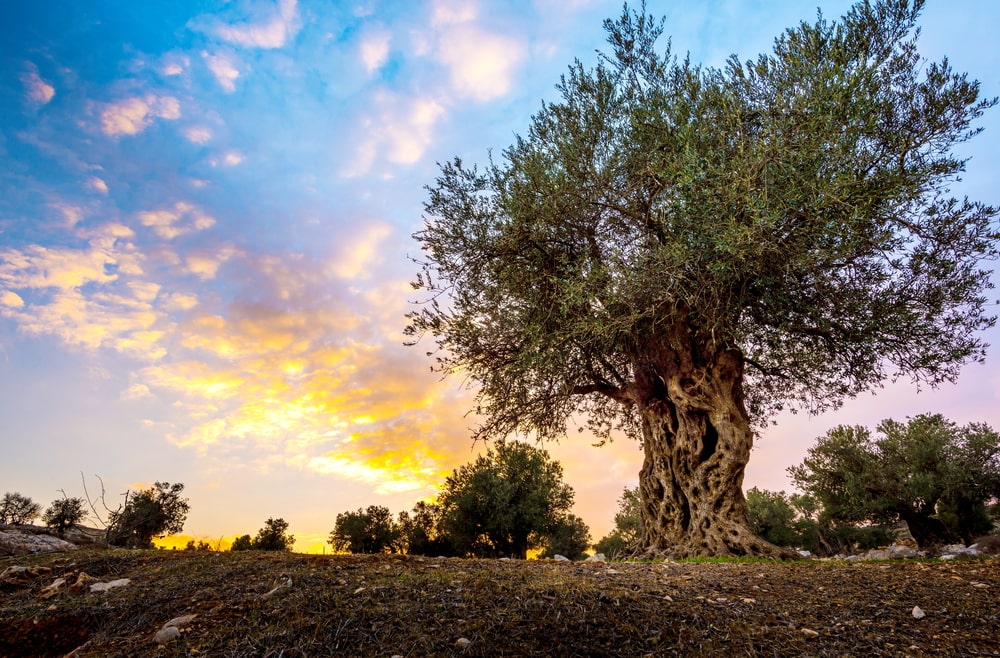
An ancient tree is any tree that is especially old for its species. A large trunk diameter, bare branches, deeply fissured bark, and a hollow trunk are all telltale signs of an old tree. Scientific methods such as radioisotope carbon dating are used to find the age of a tree.
There are also tree species that have been around for countless millennia. Some of these species are “living fossils” from before the time of the dinosaurs.
The ancient oak tree I discovered in Richmond Park was hollow. It was big enough to sleep in or for four people to sit and shelter from the weather. Despite this, it was still alive.
Ancient trees are an important spiritual and cultural symbol. They are also a source of joy and comfort for many people worldwide. There are many threats to ancient trees nowadays. It is important that we learn about what makes them so special and what we can do to help save them.
Read on to find out more about the most ancient trees and how to identify these tree species.
1. Maidenhair Tree (Gingko biloba)
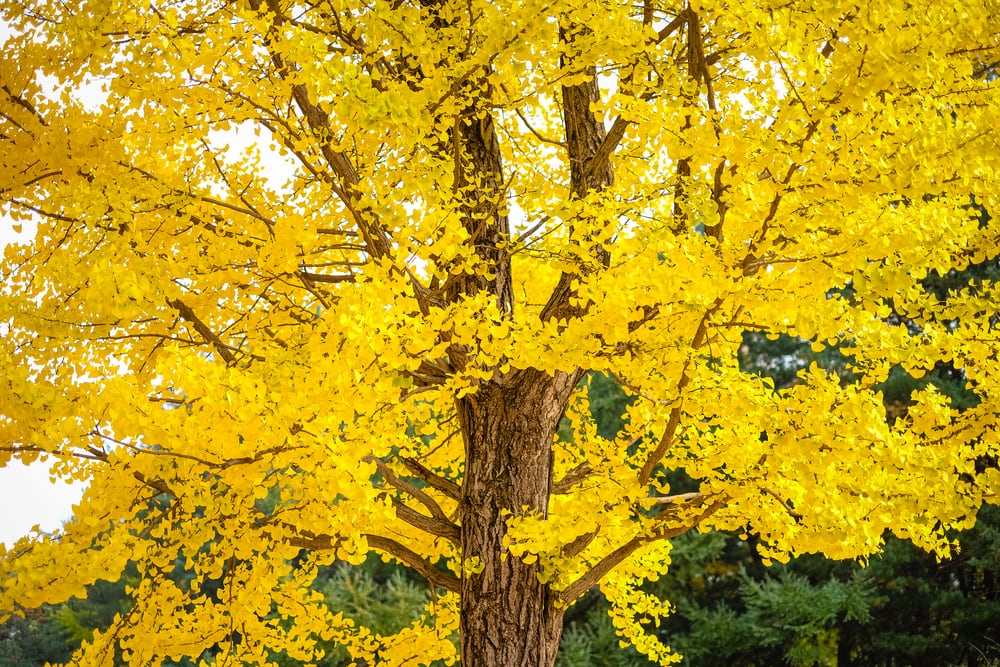
The Ginkgo Biloba Tree is a venerable species that has survived the test of a vast geological time span. It’s also known as the Maidenhair tree. It originates in China.
Ginkgo biloba fossil leaves have been found that date back 200 million years. The Ginkgo biloba lives a long time as an individual tree too. The oldest specimen recorded reached the grand old age of 3,500 years.
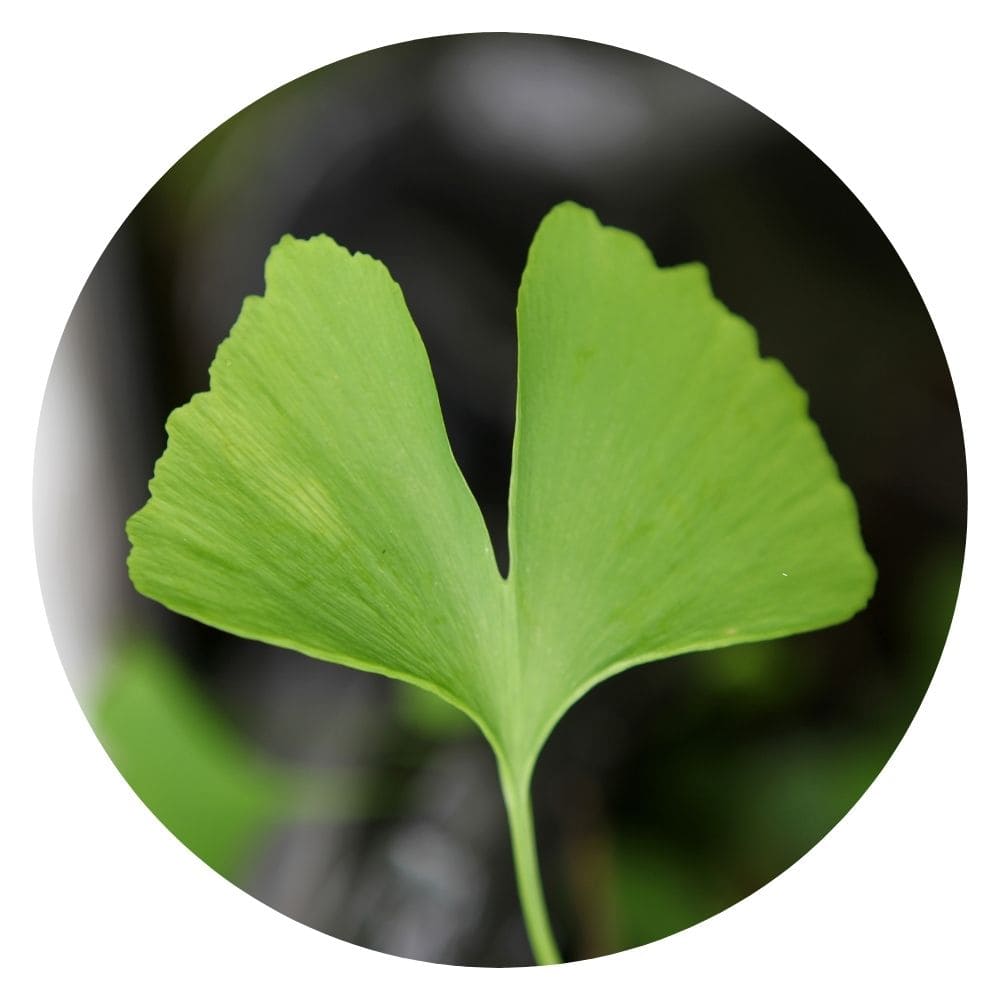
Ginkgos are easy to recognize. They have fan-shaped leaves with two lobes. The leaves turn a beautiful yellow in autumn.
In traditional Chinese medicine, they are used to improve memory, increase blood flow, and act as an aphrodisiac. The fruits smell rotten, but the nuts inside are edible.
2. Monkey Puzzle Tree (Araucaria araucana)
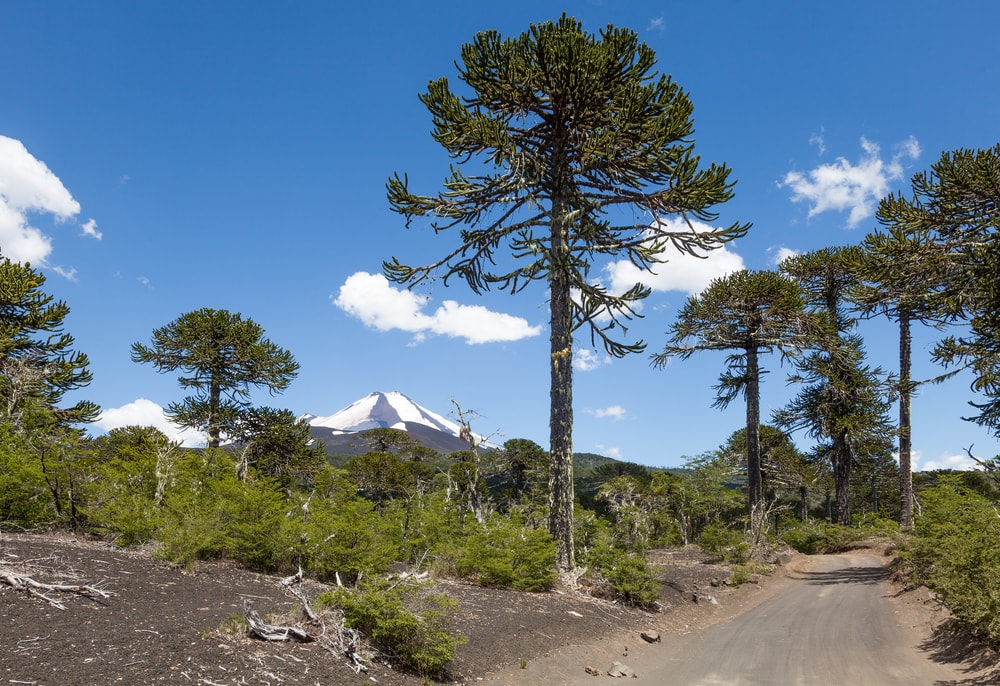
The Monkey Puzzle Tree is so named because it is supposed to be a puzzle for a monkey to figure out how to climb it.
It’s also known as the Chilean Pine, the Living Fossil Tree, or the Monkey Tail Tree. Monkey Puzzle trees are native to Chile, where they are now endangered.
Monkey Puzzle trees can be dated back to 200 million years ago, in the Permian and Triassic eras. Individual Monkey Puzzle trees take a long time to mature. They need to be at least 30 years old before they can start reproducing.
Monkey Puzzle trees are dioecious, which means you need both male and female trees if you want the female trees to produce their edible seed cones. These have a long culinary history among the indigenous people of Chile.
3. Cycads
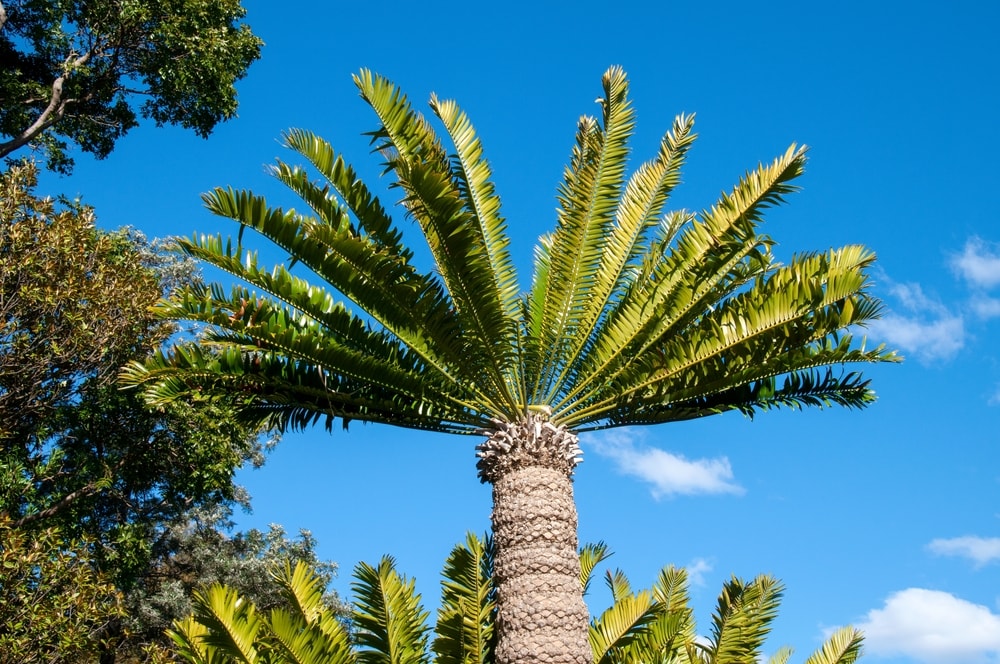
Cycads are an entire group of trees that evolved in the Permian and Triassic eras. The dinosaurs and their ancestors, the archosaurs, would have eaten cycads.
Cycads are long-lived and reproduce slowly, which makes them vulnerable to extinction.
There are 300 species of cycads. They can be split into three families: the Cycadaceae, the Stangeriaceae, and the Zamiaceae. They live in subtropical and tropical regions such as Mexico, Polynesia, South Africa, and Australia.
Even though cycads look like palm trees, they are more closely related to ginkgo trees. They have a thick, cylindrical trunk of spongy wood.
The leaves are evergreen and come out in a rosette at the top of the trunk. They produce seed cones, some of which are very brightly colored to attract birds.
4. Giant Sequoia or California Redwood (Sequoiadendron giganteum)
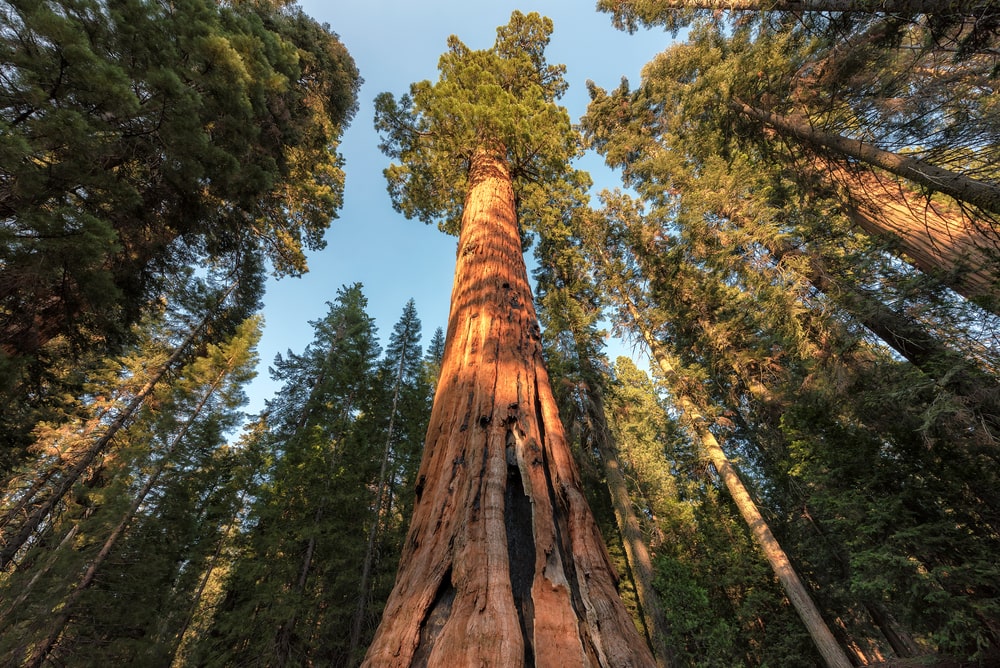
General Grant, the world’s tallest tree, is a Giant Sequoia. You can visit it in California’s Sequoia National Park. It is 84 meters tall and 11 meters wide.
Giant sequoias can live around 3,000 years. Part of their secret to long life is the tannins in their bark, which help prevent disease.
Giant sequoias are the largest trees on Earth. They originate from California but have been introduced into Austria and France. They were previously named Wellingtonia after the Duke of Wellington but were reclassified recently as Sequoiadendron.
Giant Sequoias have spongy, red-brown bark. The leaves are thin and scale-like. They have adapted to using fire to reproduce.
The adult trees have fire-resistant, watery sap and bark. The seed cones can only germinate in soil that has been stripped bare by a forest fire.
You can watch this video for more giant sequoia facts!
5. Olive Tree of Vouves (Olea europaea)
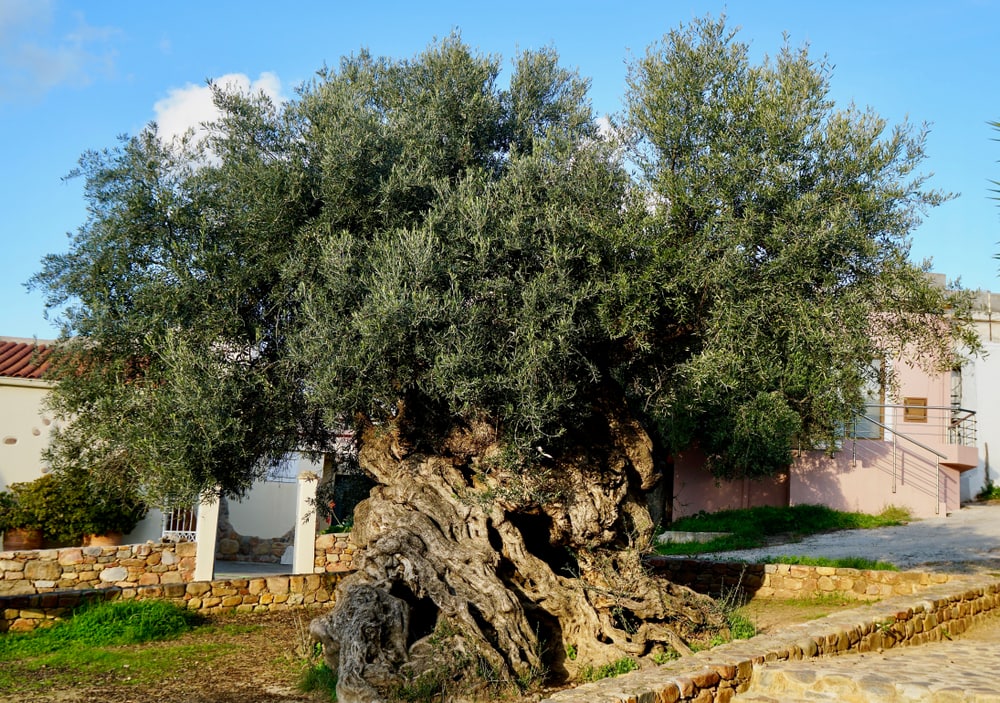
The Olive Tree of Vouves in Crete is estimated to be between 2,000 and 4,000 years old.
As it has no heartwood left, it cannot be reliably dated using radioisotope dating. Instead, a less reliable method based on the perimeter of its trunk and its relationship to local cemeteries has been used.
The Olive tree as a species has only been recorded to have been around for 8,000 years. This was the time when olive trees were first domesticated. From then on, the small and bitter wild olives were selectively bred into the juicy, oily fruits we know.
The olive tree gains a place on this list because one of the oldest specimens of tree worldwide is an olive.
Cuttings from the Vouves Olive tree were made into victory wreaths for the 2004 Athens Olympics. These wreaths are known as “kotinos.”
The tree also still produces olives, called Tsounati olives. These are eaten as a table olive but also used to produce an amber olive oil.
6. Fortingall Yew, Wales (Taxus baccata)
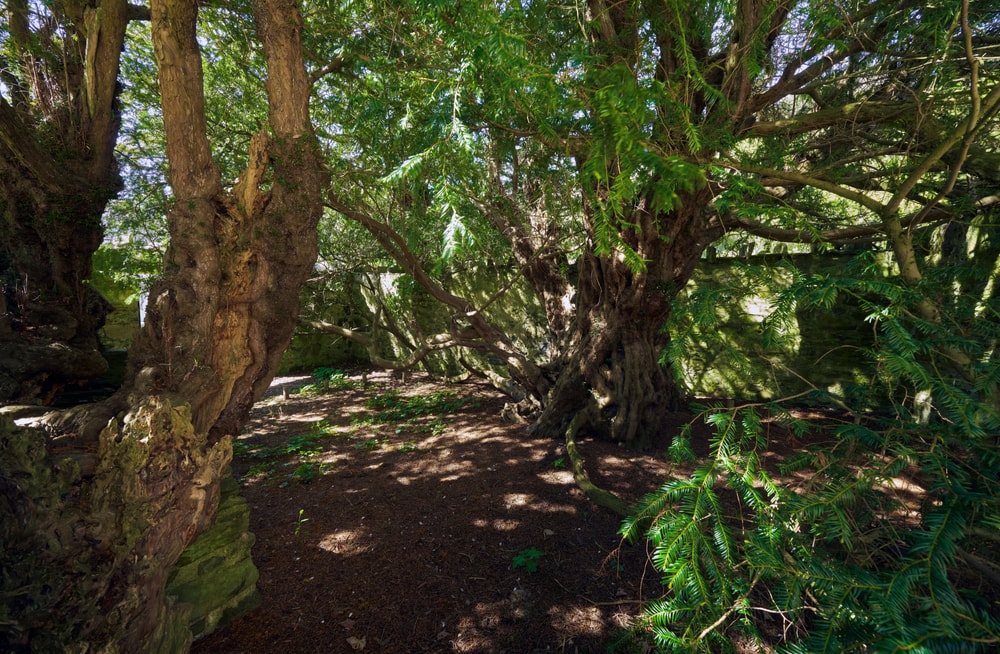
The Fortingall Yew in Perthshire, Wales, is one of the most ancient yews in the world.
It’s estimated to be between 2,000 to 3,000 years old. Some estimates place its age at 5,000 years. It was actually bigger in 1769, when its girth was an enormous 17 meters. A funeral procession could pass through the fork in the trunk.
Yews are so naturally long-lived that they have to be 900 years old before they attain ancient tree status. Yews are from the family Taxaceae, which evolved 201 million years ago in the Jurassic era.
The Crowhurst Yew in Surrey is also very ancient. It even has a door built into it. This yew is believed to be 4,000 years old. Villagers hollowing it out discovered a cannonball fired into it during the English Civil War.
7. Alerce Cypress (Cupressaceae family)
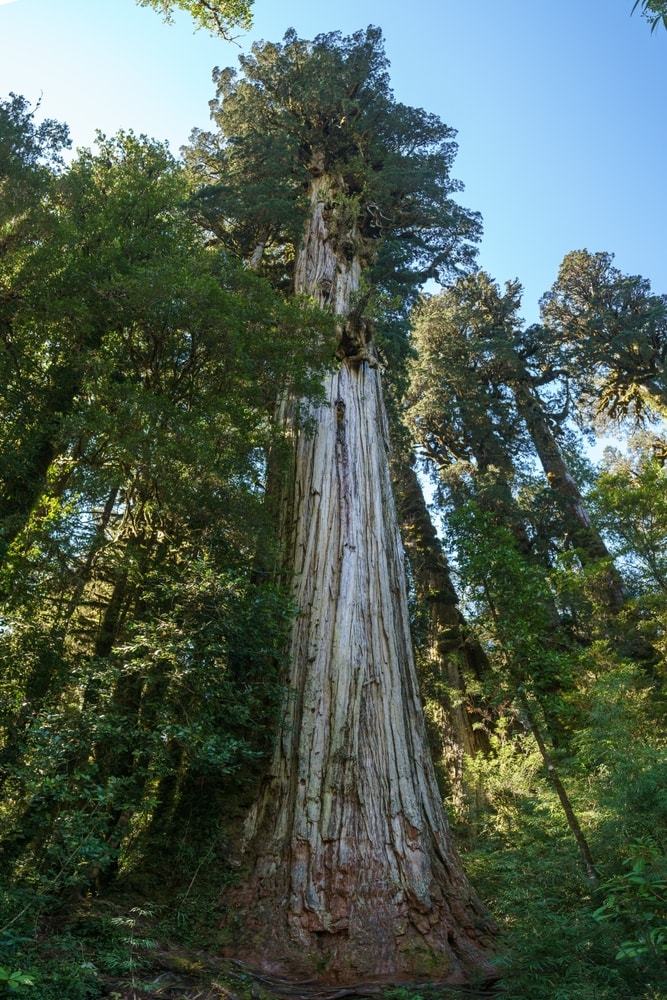
The world’s oldest cypress tree is “Great Grandfather,” an Alerce cypress growing in Alerce Costero National Park in Southern Chile.
This cypress is calculated to be 5,000 years old, which makes it older than the bristlecone pine Methuselah. Alerce cypresses are an endangered species.
The age of this tree was deduced using computer modeling. Some scientists refute the findings. They believe the only reliable method of dating a tree is by counting its growth rings once it has died.
The Cypress family of trees is the largest family in the conifer genus in terms of genera. It comprises 25 genera. Cypresses are evergreen, resinous, and aromatic trees and shrubs. They are monoecious except for the Juniperus genus. Both male and female parts grow on the same tree.
8. Wolleni Pine (Wollemia nobilis)
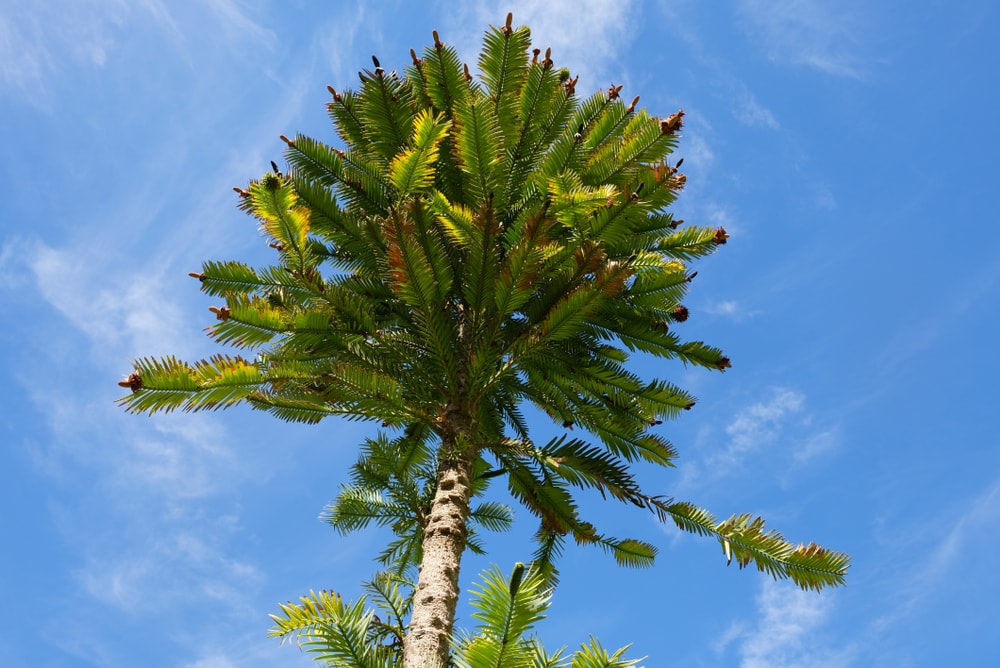
The Wollemi Pine is an extremely rare and critically endangered tree. Only 100 or so trees survive in Wollemi National Park in the Blue Mountains of Australia. The most ancient of the remaining trees is named “The Bill.”
As it is coppiced, the roots are roughly 1000 years old, but the trunk is only 400 years old.
The Wollemi Pine is another species with an ancient heritage. It has been found in the fossil record during the same period of time as the dinosaurs. It hails from the Araucariaceae family, the same family as the Monkey Puzzle tree. Individual trees can live from 500 to 1000 years.
The Wollemi Pine is an evergreen conifer. It has short needles on long fronds and a cone shape. There are male and female cones on the same tree. The seeds are paper-thin and brown.
9. Methuselah, Bristlecone Pine (Pinus longaeva)
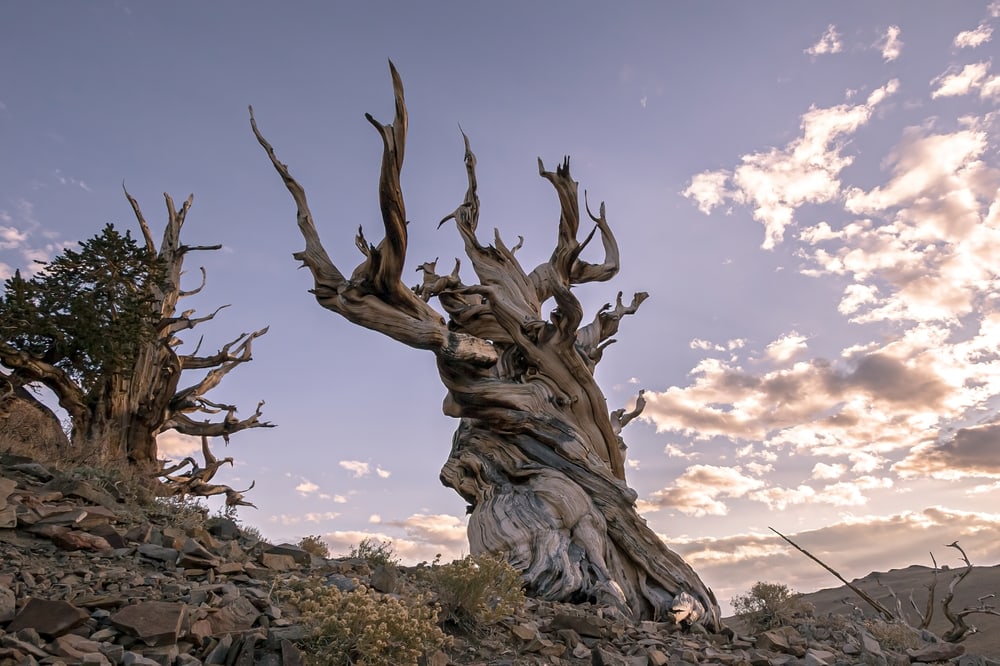
Named after the long-lived character in the Christian Bible, Methuselah is also the name given to a Bristlecone Pine.
This tree is one of the oldest non-clonal trees in the world and is still alive today. It’s 4,765 years old. The oldest bristlecone pine ever recorded was “Prometheus.”
In 1964, a graduate student accidentally cut it down when it was 4,900 years old.
Bristlecone pines are found in the mountains of Utah and the Great Basin National Park, both in the US. They belong to the group of pines known as Foxtail pines.
They have five needles per fascicle. The fascicle is the papery sheath that houses the base of the needles.
A bristlecone pine can die in stages. This happens when roots become exposed. The portion of the tree above the exposed root will die, but the other parts of the tree will live. This is why bristlecone pines have a tortuous, twisted look.
10. Old Tjikko, Norway Spruce (Picea babies)

The Norway spruce, known as “Old Tjikko,” is the oldest clonal tree alive today. It grows on the mountain of Fulufjället in Sweden.
Clonal tree root systems are much older than the upper part of the tree. The trunk of Old Tjikko is a mere few hundred years old, but its root system is 9,565 years old.
Norway Spruce is a common evergreen conifer. They grow quickly. Individual trees can live for up to 1,000 years. They are triangular in shape and have purple-brown bark once they mature at 80 years old.
Norway Spruce originates from Scandinavia but grows in many temperate and cold parts of the world. It’s a popular Christmas tree. It provides homes for many species of insects. Squirrels eat the cones of Norway Spruce.
You may also like: A Botanical Treasure Hunt: Discovering Rare Flowers from Around the Globe
How to Learn a Tree’s Age
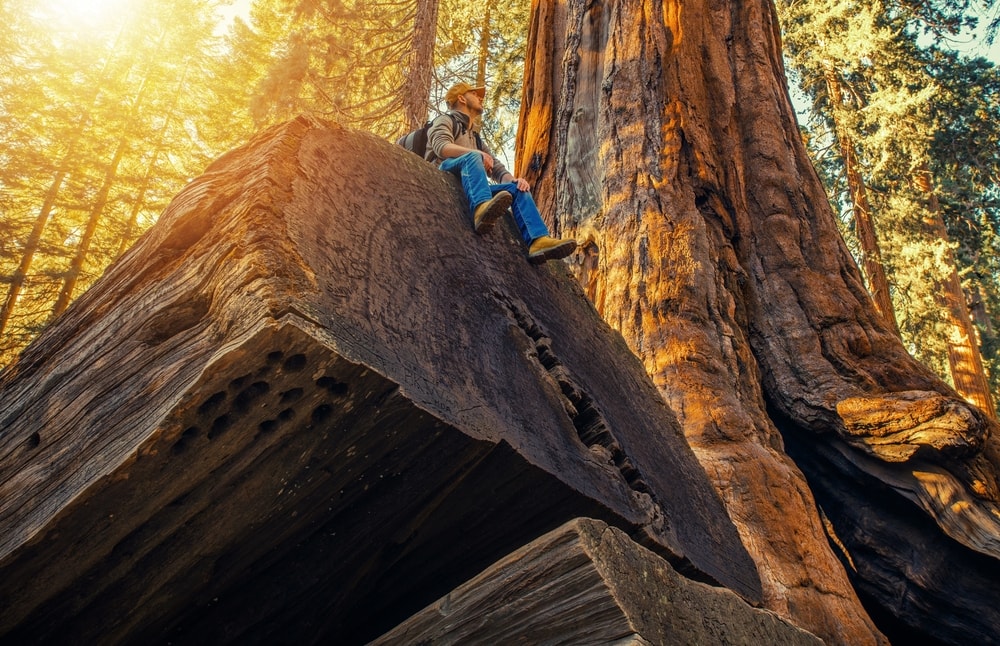
How can scientists find out the age of a tree? How reliable are these methods? Here we take a look at the methods used today to find out the age of a tree.
You can also check out this informative video on how to determine the age of a tree.
You may also like: Perennial vs Annual Plants – Which Is Right for You?
History of Tree Evolution

So when did trees actually arrive on Earth? What did they evolve from? Here is a history of trees in one list:
- Silurian period. 443–417 million years ago. The first vascular plants evolve. This was the time when the Earth’s climate stabilized. Vascular plants possess xylem and phloem, which are tissues that carry water and food through the plant.
- Denovian period. 417–354 million years ago. The first seed-producing trees and plants evolve. The first forests appear.
- Carboniferous period. 354–290 million years. Dense forests have spread across the land. Four-limbed land animals evolved to eat them.
- Permian. 290–248 million years. Ancient tree species we know today evolved, like ginkgo, cycads, and monkey puzzles. Reptiles evolve.
- Triassic period. 248–206 million years. Pangeae (the continents) are still joined together.
- Jurassic period. 206–144 million years. Dinosaurs roam the land. Pine trees evolve, including the Wollemi Pine. This is still around today.
- Cretaceous period. 144–65 million years. Flowering plants evolve. Hardwood trees evolve, including oaks, magnolias, and laurels.
- Tertiary. 65–1.8 million years. As the climate warms, hardwoods take over from conifers. Grasslands evolve.
- Quaternary period. 1.8 million years ago to present day. Beech, ash, birch, alder, and hazelnut all evolve. Along with humans.
You may also like: Types of Plants From the Dinosaur Age to the Present
FAQs
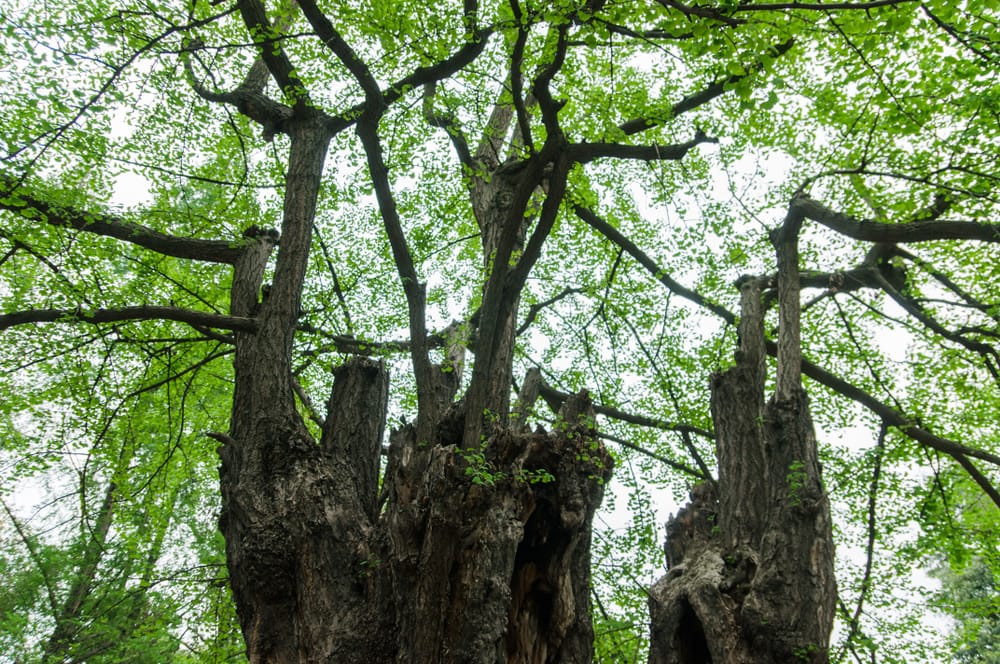
What will the world lose if ancient trees die out?
Ancient trees play host to vast amounts of animals and plants like mosses and lichen. They also provide genetic diversity. Ancient trees are also important to people for spiritual and cultural reasons.
What is the most ancient species of tree?
The Ginkgo Biloba tree is the oldest living species of tree. It is called a living fossil because it dates from 200 million years ago.
It is the sole member of its genus Ginkgo, the only member of its family Ginkgoaceae, and the only order in its subclass Ginkgoidae. It’s also the only link between ferns and conifers.
What makes a tree an ancient tree?
To qualify as an ancient tree, a tree must be very old for its species. It will often be slowly decaying, but it can still live in this state for hundreds of years. It will usually have a wide trunk and a relatively small canopy. It is often hollow or is becoming hollow.
What was the first tree on Earth?
The earliest trees in the fossil record are Cladoxylopsids. These ancient palm trees grew on Earth from 393 million to 372 million years ago. The fossils were found in a remote part of China.
What is the oldest tree fossil?
The oldest fossil forest is in New York. A vast area of fossil forest was discovered in the Hudson Valley’s Catskill Mountains. The forest contains fossils of Cladoxylopsids and Archaeopteris. There’s also a third type of tree that hasn’t been identified yet.
What is the rarest tree?
The rarest tree is Pennantia baylisiana, a species endemic to the Three Kings Islands near New Zealand. There is only one surviving tree, which is female and cannot reproduce without a male.
Luckily, scientists have grown some Pennantia baylisiana seedlings from the fruit and placed them in botanic gardens so the species will survive.
What are the threats to ancient trees?
Inadequate tree and site management can damage or kill trees. Safety concerns about falling branches have led to ancient trees being cut down.
Introduced diseases are another concern. Degradation of a tree’s natural habitat is another threat. Taking souvenirs from an ancient tree’s bark can weaken or kill it.
What can we do to help protect ancient trees?
Recording the presence and age of ancient trees is the first step. Contact your local Tree Officer or the local planning authority for your state or area. They can protect the area the tree is in.
More from Outforia
Check out these other interesting tree species!








